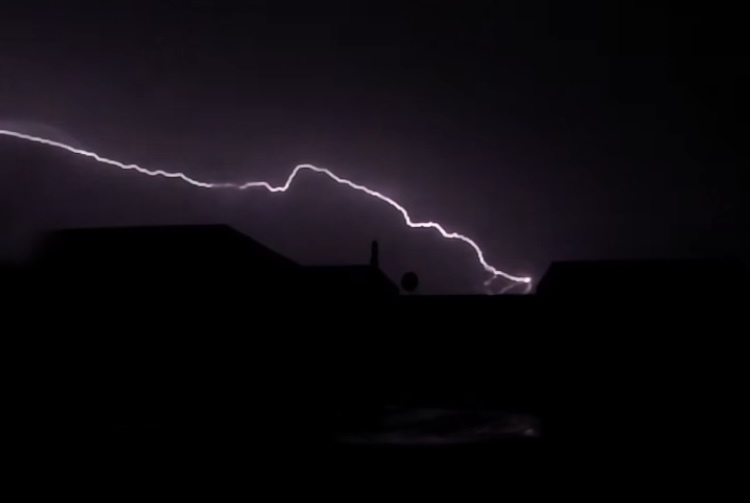Thunderbolts and lightning
Sue Wards
13 September 2021, 12:04 AM
 Lightning strikes in the Southern Lakes area. IMAGE: www.lightningstrikes.com
Lightning strikes in the Southern Lakes area. IMAGE: www.lightningstrikes.comLast night’s thunderstorm was a “pretty significant” event, with lightning strikes right across Wānaka, MetService has told the Wānaka App.
Meteorologist Andrew James said there were more than 50,000 strikes across the country and out to sea during the hours-long event on Sunday evening (September 12).
“Most of the strikes don’t touch the ground, most are cloud to cloud,” Andrew said. “If something on the ground does get struck by lightning it is a pretty significant event.”
Fire and Emergency NZ (FENZ) told the Wānaka App there were two callouts last night: one at 5pm in the Forest Heights area, when someone reported a cell tower struck by lightning, and one at 7.34pm, when someone reported that a street light on Infinity Drive had been struck by lightning.

Lightning caught at Lake Hāwea last night. PHOTO: Kurt Holsted
However on both occasions when the Wānaka fire brigade arrived and checked everything out, “we couldn’t find anything”, a FENZ spokesperson said.
“It’s been pretty quiet, we got off quite lightly,” he said.
Check out the lightning data here from MetService.
Andrew said the distance of the event is not necessarily correlated with the loudness of the thunder.
Light travels faster than sound and sound travels at about 300m a second, so a rough gauge of distance is to count from the lightning flash to the thunder: each second equates to a kilometre, Andrew said.
This video of the storm was captured by Kurt Holsted in Lake Hāwea.
The storm was “a significant thunderstorm event”, Andrew said, which affected much of the country.
“We’ve got a cold air mass moving up the south, with relatively warm air in the north, and those two air masses don’t mix very well.”
Good upward motion is needed to create a thunderstorm, he said. As the warm air goes over the top of the cold air, the differently charged particles drive the formation of thunderstorms.
Most of the damage caused by yesterday’s weather was from high winds in Otago, Andrew said.
“Spring is the busiest time of the year for weather,” Andrew said, adding it is “hard to get a gauge on the frequency of such events”.






